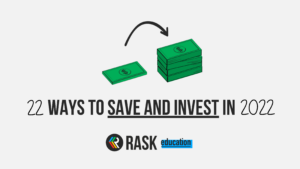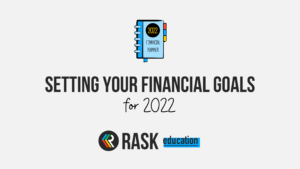Explained: how to open a US stock trading or brokerage account and buy US shares from Australia. This article covers the steps involved in finding and selecting a US stock account which allows you to invest in US stocks from Australia, including important features to look out for, my #1 tip and the key risks involved.
Rask Money Question Received
What are the best share brokerage accounts for buying US stocks from Australia? If I want to trade US shares, how do I do that? Can you explain the risks of choosing a US brokerage account?
Read previous questions in our Money Q&A Library or submit your own on the Rask Education homepage!
Kate’s Response
Many investors who are just getting started in shares want to invest in companies they know and the products they use, and for many of us that includes companies like Netflix (NASDAQ: NFLX), Google (NASDAQ: GOOGL), Amazon (NASDAQ: AMZN), Facebook (NASDAQ: FB) and Disney (NYSE: DIS) — or even Tesla Inc (NASDAQ: TSLA). The thing is, these companies and stocks are not listed on the Australian Securities Exchange (ASX), so it can be a little more complicated to invest in them from Australia and you’ll probably need a separate US brokerage account.
Related tutorial: how to buy Australia shares (with video)
Popular US brokerage platforms for Australians
Although we don’t recommend a specific US brokerage platform for our investor members or students, I’ve noted down the most popular ones to get you started. Remember to always do your own research and consider the points I mention further down in the article.
If you are looking to open a brokerage account to trade US stocks, here are some key points to consider.
Trader vs investor
Firstly, you should determine why you want to invest in US stocks (also called shares or equities), and whether you’re an investor or a trader. Is this part of your long-term investment strategy or are you hoping to trade stocks on a regular basis?
Investors should be going for a broker with low fees, tight FX margins (aka the fees you pay when you convert AUD to USD), and ideally no account fees.
Traders might not care as much about fees – but they should still be very careful with the broker they choose. Some brokers, like IB, have account fees and a range of assorted fees and costs. Traders might also pay for premium features like the ability to trade on unsettled funds and analyst buy/sell/hold ratings.
You should find some rigorous, independent research to learn if day trading is all it stacks up to be (hint: it might not be what you think it is).
Who is the owner of the shares?
Many of the US brokers available will work with a custodian which will hold the shares on your behalf. It is essential to read the T&Cs, as you want to be the owner of shares, not have a ‘right to them’.
You also want to make sure that the money is segregated in the event of default and that the broker is insured and registered with the Securities Investor Protection Corporation (SIPC) — an ‘insurance that provides brokerage customers up to $500,000 coverage for cash and securities held by the firm’ (see Investopedia).
Fees & FX Charges
Fees and foreign exchange (FX) costs are one of the most important factors to keep in mind when comparing US share brokerage accounts. To give you an idea, I’ve compared the cost of using two popular Aussie brokerage platforms, CommSec International and Stake, below.
| CommSec International | Stake | |
| Brokerage (US Markets) | USD $19.95 for trades up to USD $5,000 USD $29.95 for trades up to USD $10,000 0.31% for trades above USD $10,000 | $0 USD |
| Custodian | Pershing LLC (subsidiary of the Bank of New York Mellon) | Broker – DriveWealth, LLC Custodian – Citibank |
| FX Rate | 0.60% (USD) | 0.70% (USD) – minimum of $2 |
| Other Fees (if applicable) | Custody fee for inactive accounts of $25.00 USD per year | Flat fee of $5 USD to transfer existing USD into account. |
| Research & Data | CommSec International gives you access to market news, sector analysis, stock news and indices information for US markets. | $9/month for premium service Stake Black which provides instant buying power, buy sell ratings, price targets and full company financials. |
Data & Research
Like many things, brokers come in all shapes and sizes, so think about what features you need.
For some people, it’s essential that their brokerage account comes with data on companies, including financial statements or news. Some brokerage providers will also give you access to analyst buy/hold/sell ratings and price guides, although this may incur an additional fee. See “The Difference between share prices and share valuations“.
If you’re interested in how to value stocks and different strategies to use, take our free stock market valuation course.
Ease of Use
Last but not least, you want to make sure that your chosen broker is easy to use because even though we have the technology for an amazing user experience, many brokers are still years behind.
My #1 tip with brokers
Before you fully commit to a broker, give it a test drive (without any money involved) to make sure it’s straightforward to buy and sell using the app. Also, test out their customer service team (give them a call) and ask them about the reporting they provide you at tax time — it’ll make your life so much easier!
[ls_content_block id=“27643” para=“paragraphs”]



